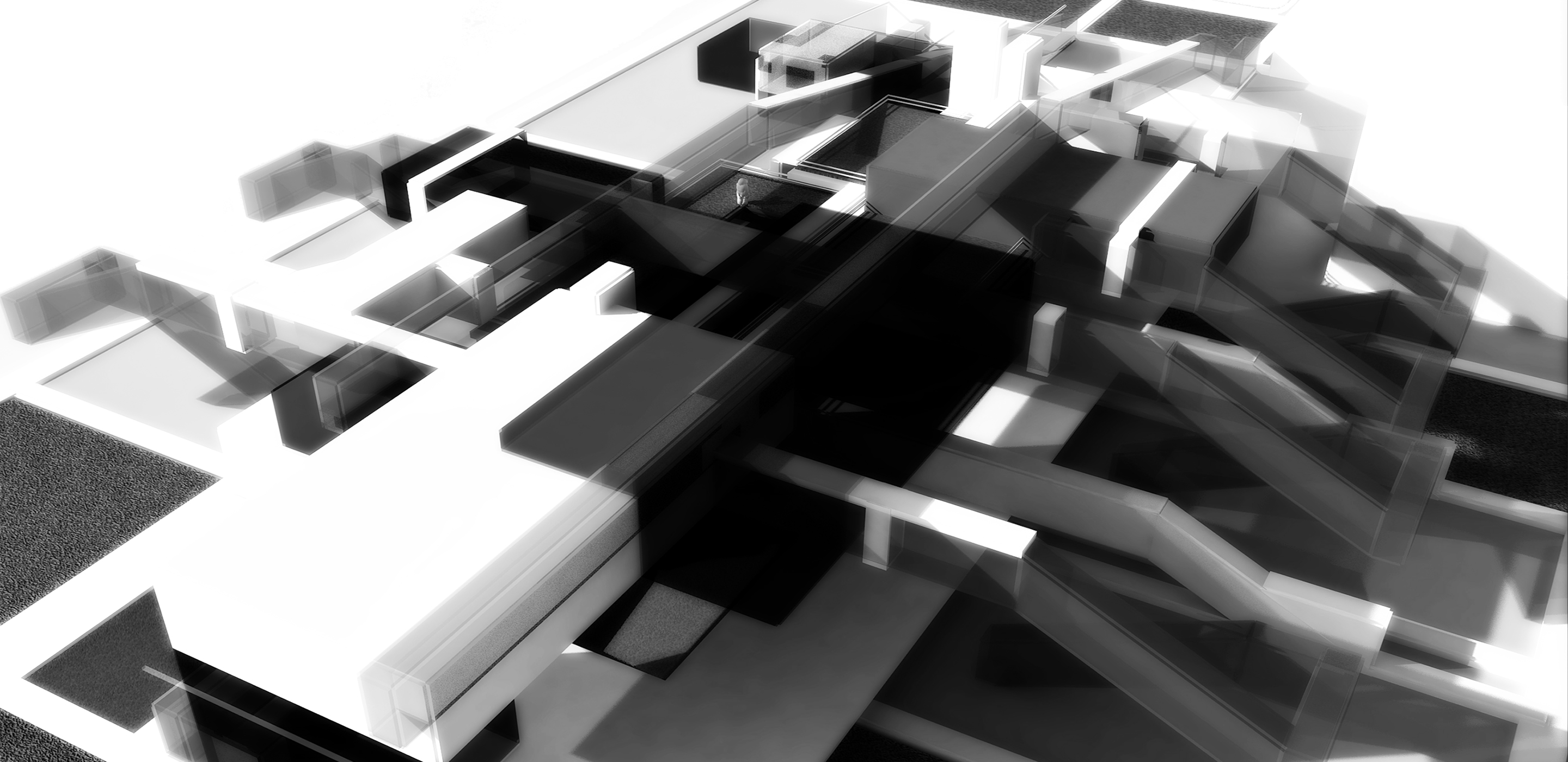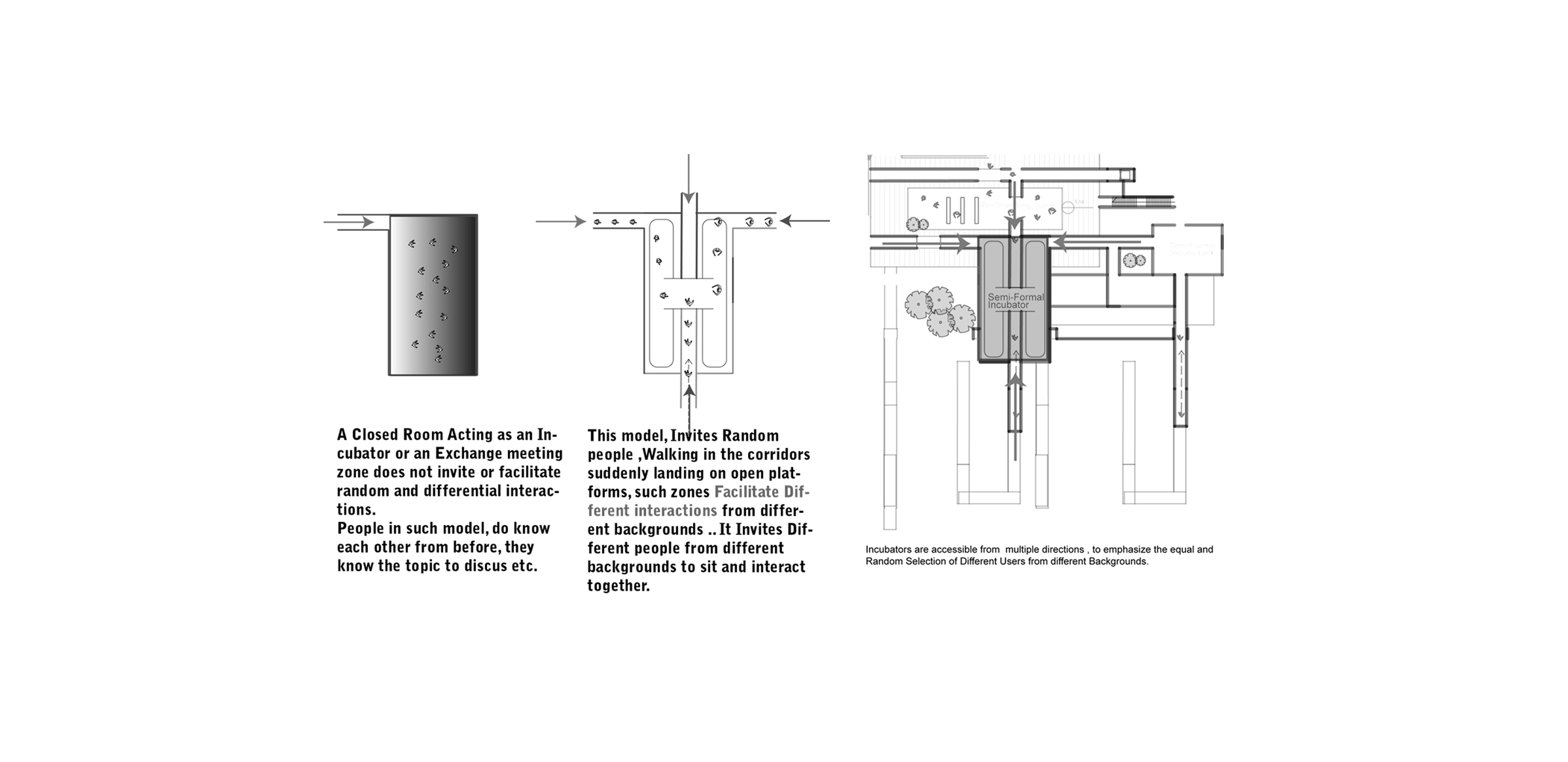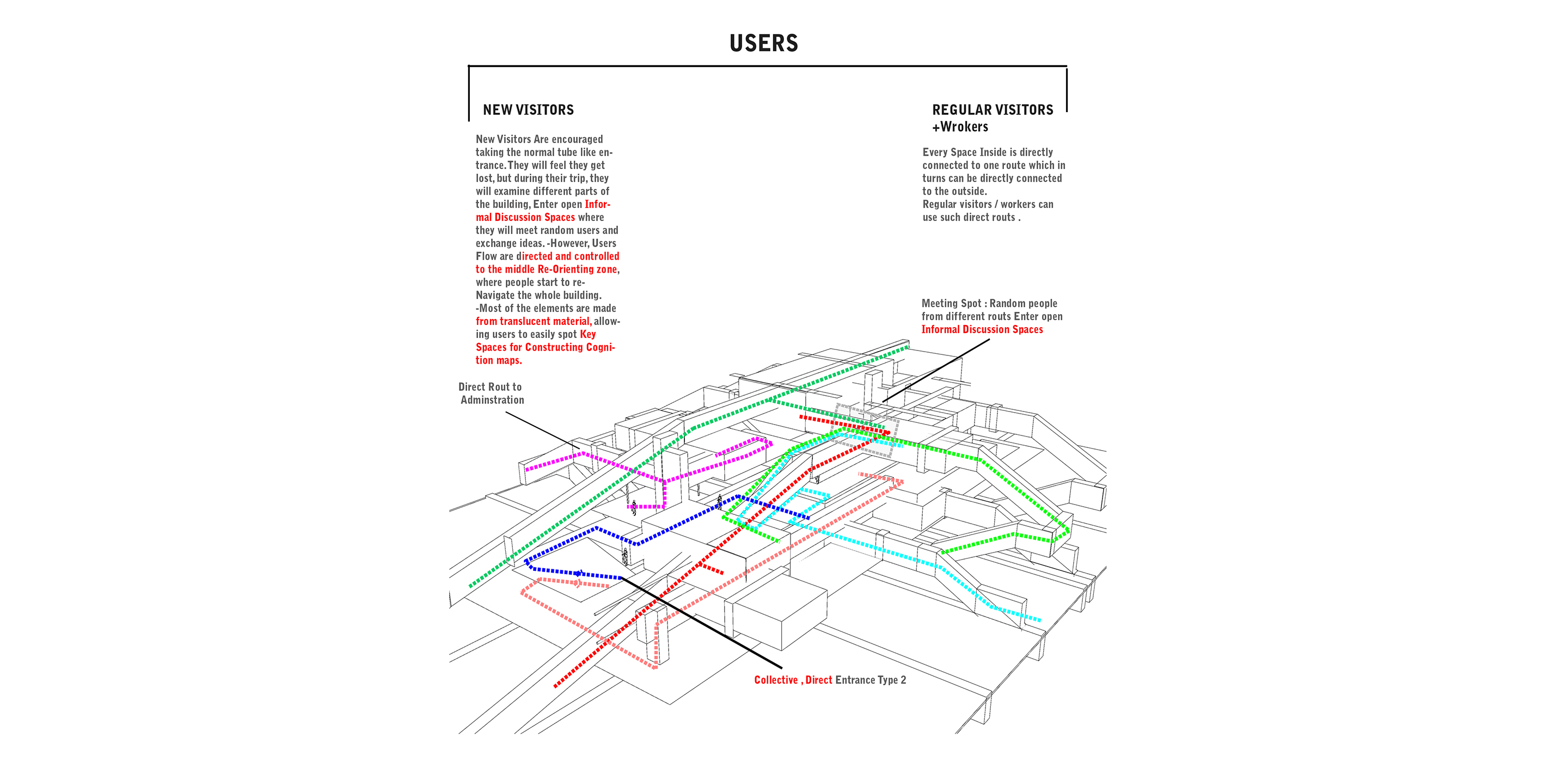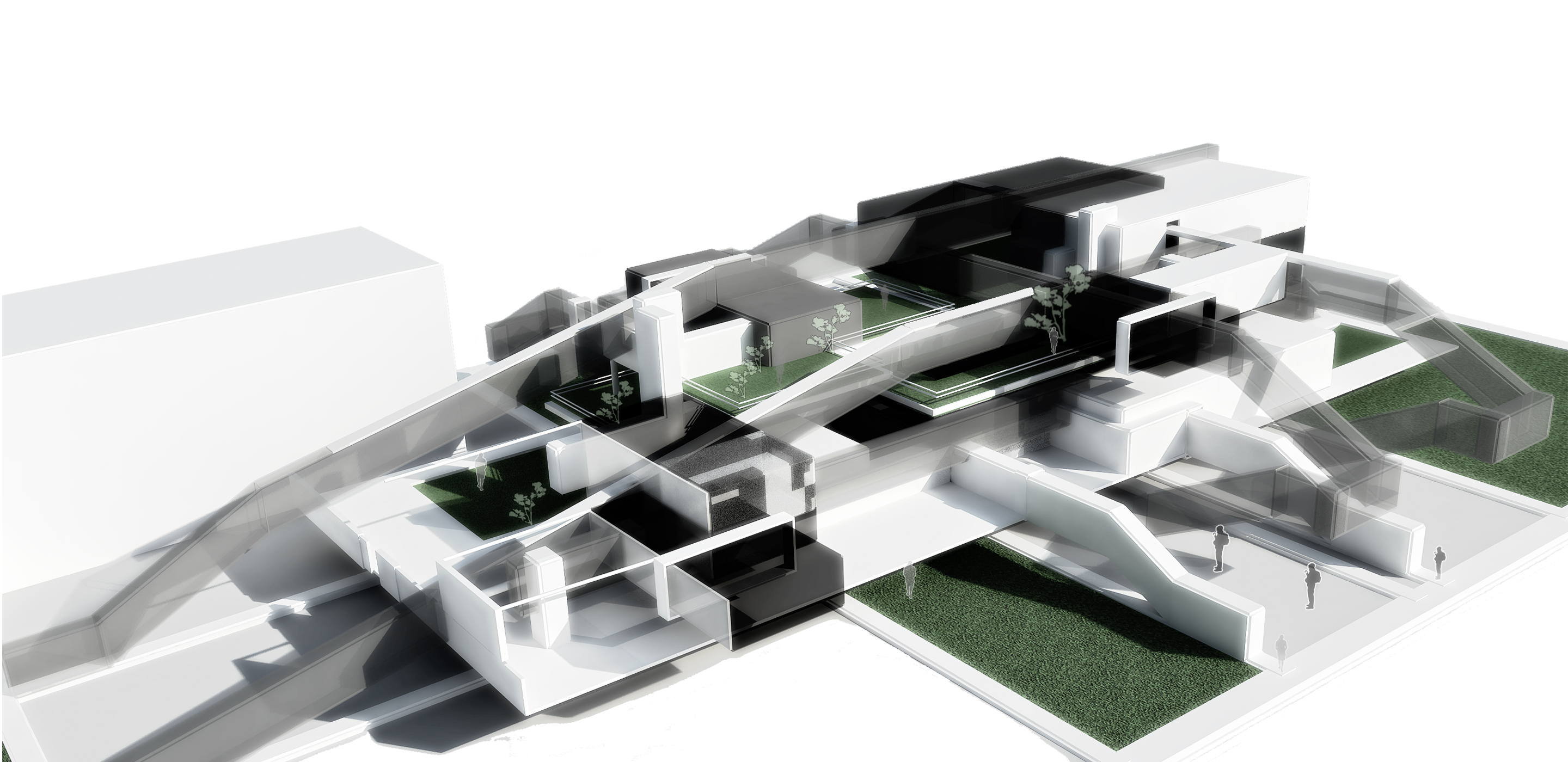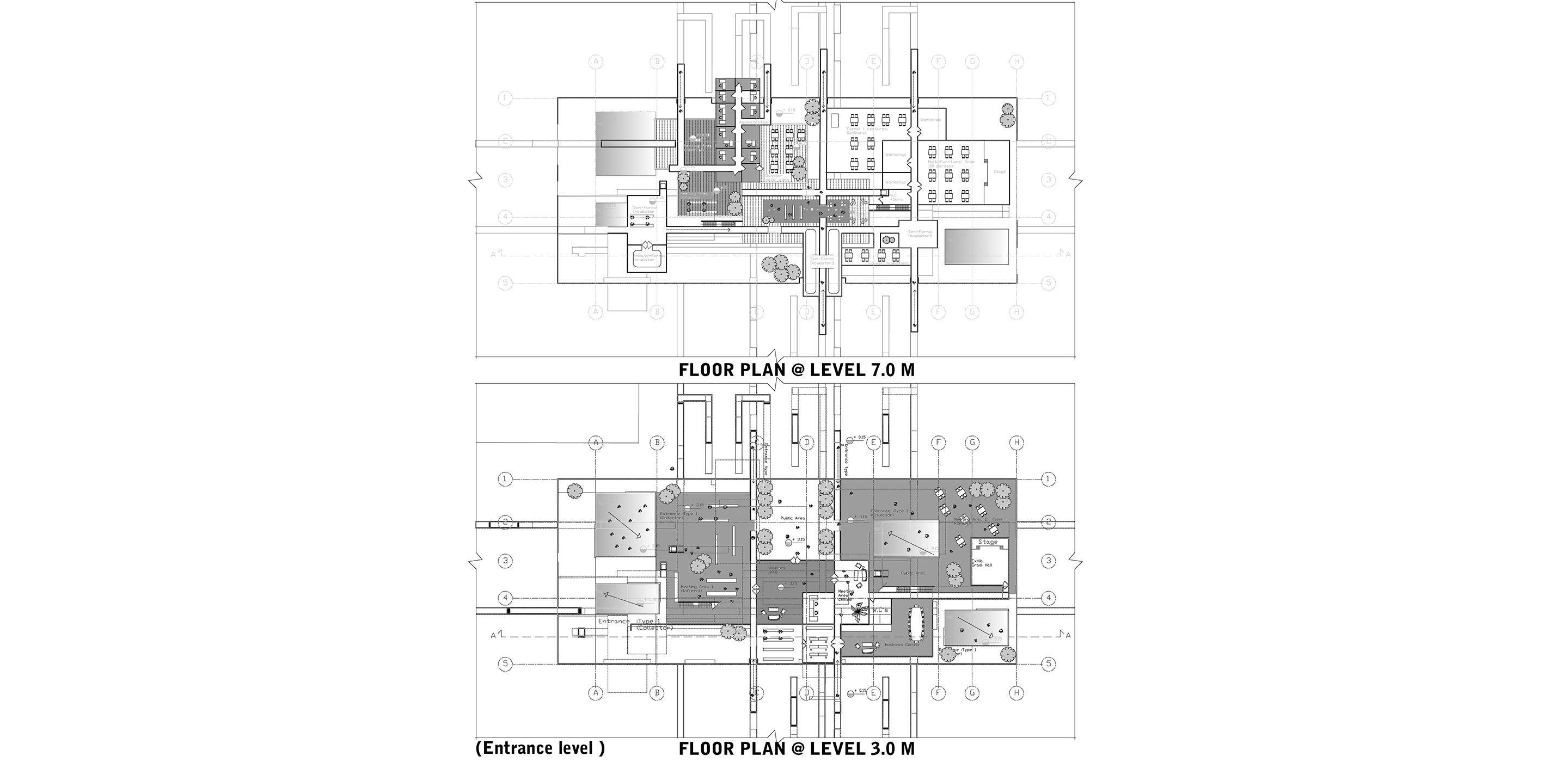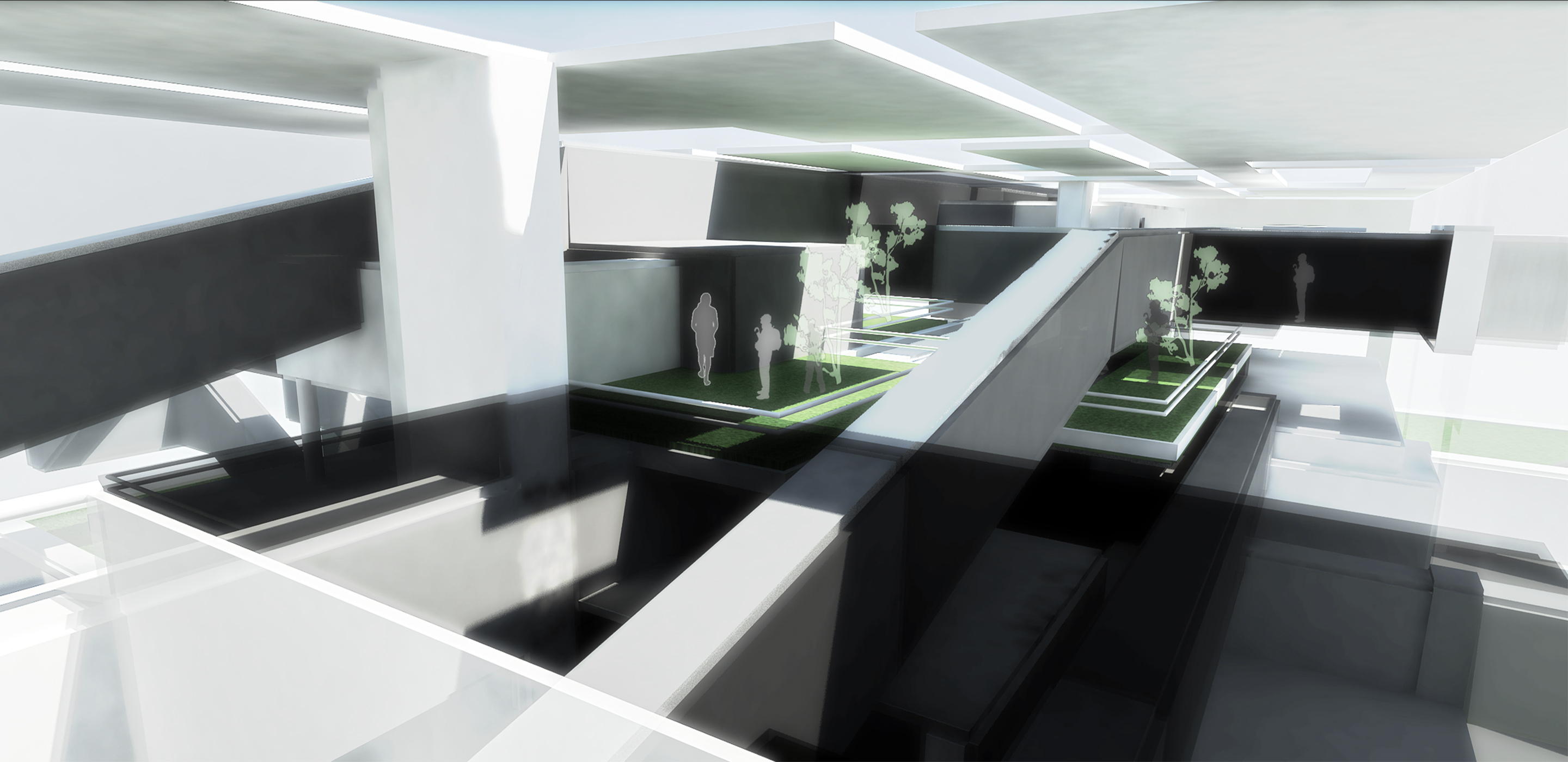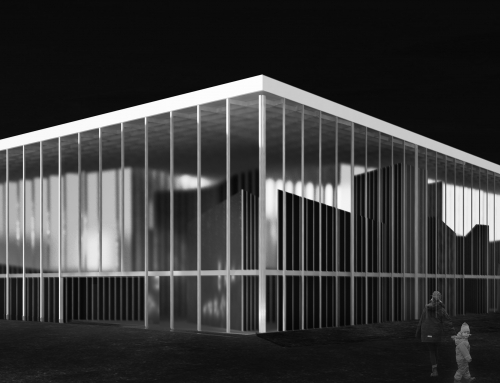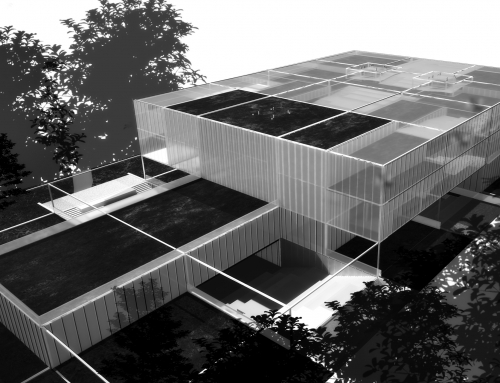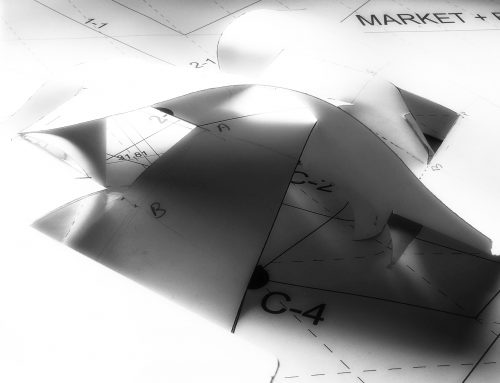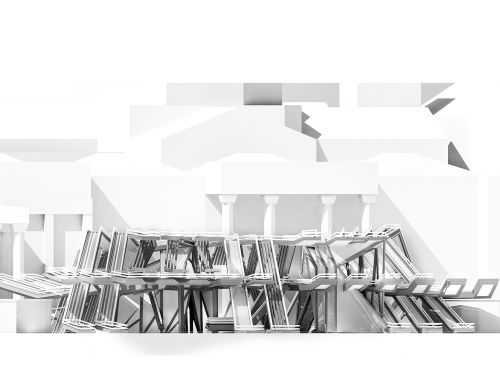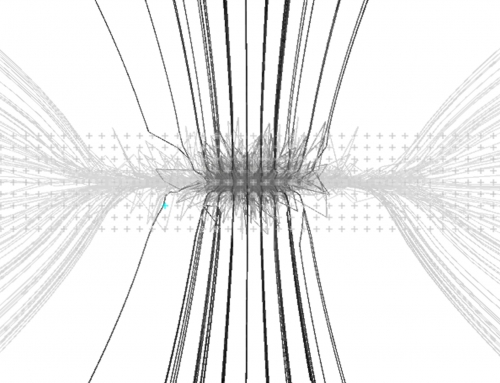Academic Cultural Exchange Competition
Controlled Disorientation
The proposal for ‘Academic Interchange’ focuses on the art of getting lost. Undetermined meetings, topics and participants are being encouraged and suggested thanks to the non-oriented, undefined path of a defined group of visitors. Visitors from different backgrounds, disciplines, randomly meet in random incubators, enhancing the equal opportunity and differentiation of the engaged discussions.
Corridor-Space Hybrid
The closed room typology offer nothing to the visitors but a predefined topics, meetings and locations.The proposed architecture operates as an active machine filtering visitors with different backgrounds and interests- through its carefully defined dense network of corridors- redistributing them, collecting them inside its proposed incubator typology. This celebrates unpredictably and facilitates richness and diversity in the topics discussed inside.
User Groups and A Space of Exchange
A one man thick 70 cm paths act as filtering apparatus brutally dismantling a visitor from its comfort peers and injecting him into a new sets of possible others. A user finds him self lost and helpless in a matrix of connected possibilities, he finally lands into a catching spaces “collectors” , where he discovers other lost groups from different backgrounds and different expertise.
The proposed model encourages a new ecology of information exchange, an ecology which depends on random selection and interlacing .“Special direct loops and routes where carefully planned to work hand in hand with the networked matrix infrastructural corridors, serving different set of user groups like employees and a visitor who knows a defined destination .
The Architecture no longer operates as a single building , rather, a series of buildings, outdoor activities, inner gardens, pathways and routes, all forming a city within a building .
The city is equipped with a High Dense Network of Paths, users can go through any of them, experience getting lost, hence, discover new spaces within the building. However, getting lost experience is precisely controlled . It’s like the old proverb “all ways lead to Rome”. Hence, a user can select the desired path, yet, architecture eventually guarantees his flow.
DETAILS
Location: Bremen- Germany
Client: University of Bremen, Germany
Year: 2011
Status: Competition Entry, Shortlisted/ Exhibition
Use: Academic Exchange complex, Offices, Residential.
Team: Peter Kneiber
